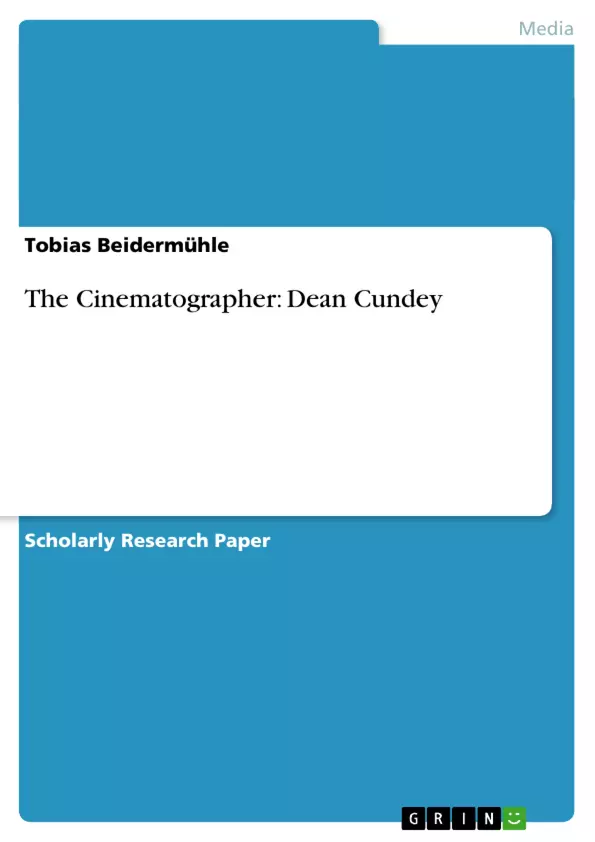Dean Cundey in as American cinematographer, most notably known for both, his early career in low-budget genre movies like Halloween, and his rise to one of Hollywood’s most sought after cinematographers for big effects movies in the late 1980s and 1990s, like Back To The Future or Jurassic Park.
Cundey is a member of the American Cinematographers Society. He has been nominated for Academy Awards and ASC Awards in Best Cinematography. Dean Raymond Cundey was born on March 12, 1946 in Alhambra, California. His father was a salesman for the credit information provider Dun & Bradstreet while his mother was a housewife. Cundey grew up as a fan of the movies and used his father’s 8 mm film camera to shoot home movies. “Being fascinated by the different world movies could create”, Cundey developed an interest in production design, and in ninth grade wrote an essay hoping to become a Hollywood production designer. But although Cundey’s father had clients in the movie industry, Hollywood seemed very far away for the young Cundey.
Inhaltsverzeichnis (Table of Contents)
- Introduction
- Childhood Dreams
- College Years and the Howe Influence
- Becoming a Cinematographer
- The John Carpenter Era
- The Robert Zemeckis Era
- The Steven Spielberg Era
Zielsetzung und Themenschwerpunkte (Objectives and Key Themes)
This research paper provides a comprehensive overview of the career of American cinematographer Dean Cundey. It explores his early years, his education, and his development as a cinematographer. The paper also examines his collaborations with prominent directors such as John Carpenter, Robert Zemeckis, and Steven Spielberg.
- Dean Cundey's early life and influences
- His journey to becoming a cinematographer
- His collaborations with John Carpenter, Robert Zemeckis, and Steven Spielberg
- His innovative use of lighting and visual effects
- His impact on the film industry
Zusammenfassung der Kapitel (Chapter Summaries)
The introduction provides an overview of Dean Cundey's career and his contributions to the film industry. The chapter "Childhood Dreams" discusses Cundey's early interest in film and his pursuit of a career in Hollywood. "College Years and the Howe Influence" examines Cundey's education and the mentorship he received from legendary cinematographer James Wong Howe. "Becoming a Cinematographer" traces Cundey's early career, his struggles, and his eventual success in securing high-profile cinematography gigs. "The John Carpenter Era" explores Cundey's collaborative partnership with John Carpenter, their shared vision, and the challenges they faced working on low-budget films. "The Robert Zemeckis Era" discusses Cundey's work on several high-budget special effects films with director Robert Zemeckis, and his pioneering role in developing innovative visual effects techniques. "The Steven Spielberg Era" examines Cundey's collaborations with Steven Spielberg on major films like "Hook" and "Jurassic Park," highlighting the unique challenges of working on large-scale visual effects productions.
Schlüsselwörter (Keywords)
The paper focuses on the career of Dean Cundey, encompassing topics such as cinematography, visual effects, low-budget filmmaking, collaborations with notable directors, and the evolution of special effects techniques in the film industry.
- Citar trabajo
- Tobias Beidermühle (Autor), 2009, The Cinematographer: Dean Cundey, Múnich, GRIN Verlag, https://www.grin.com/document/129808



